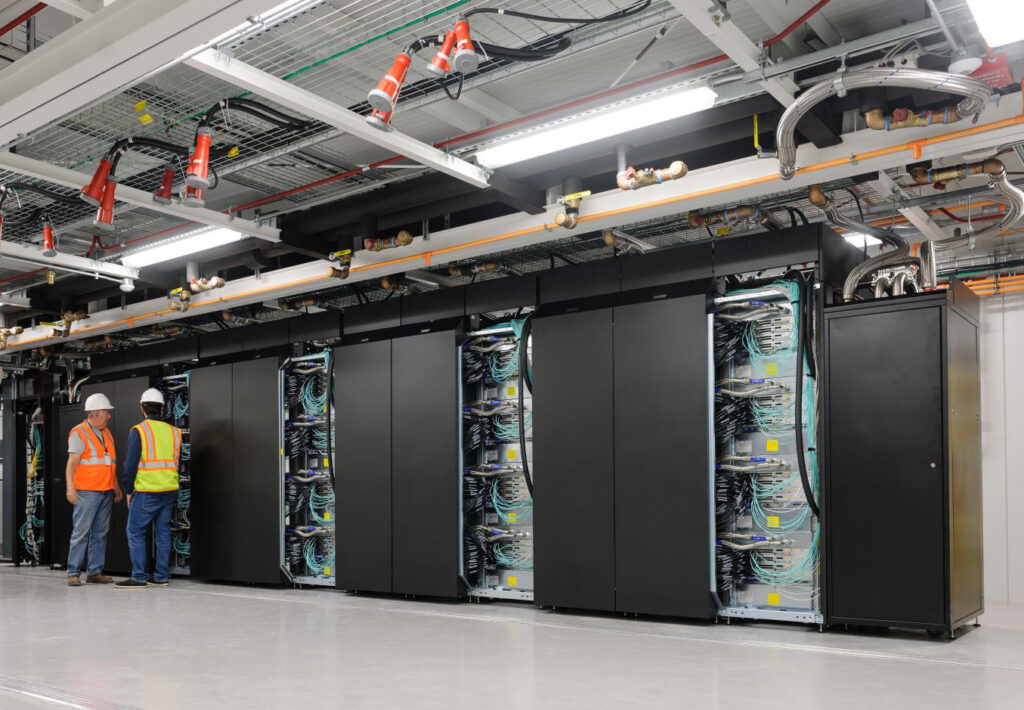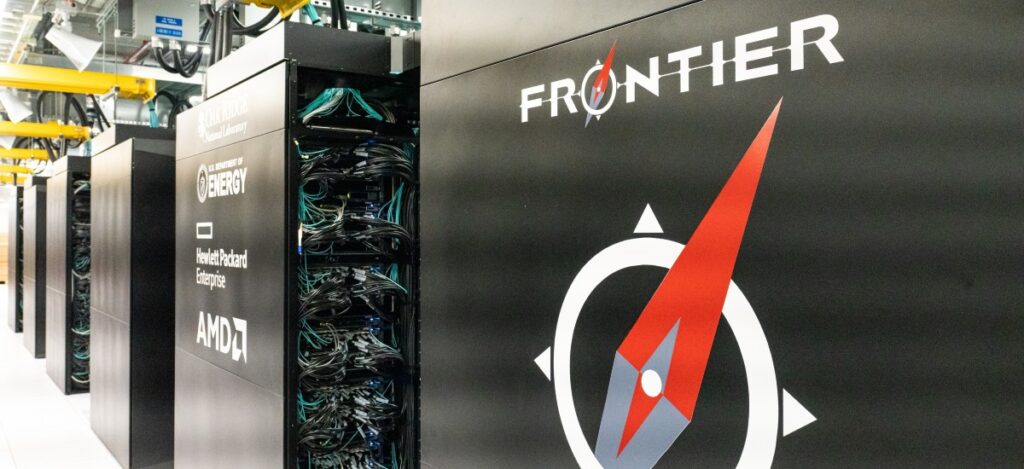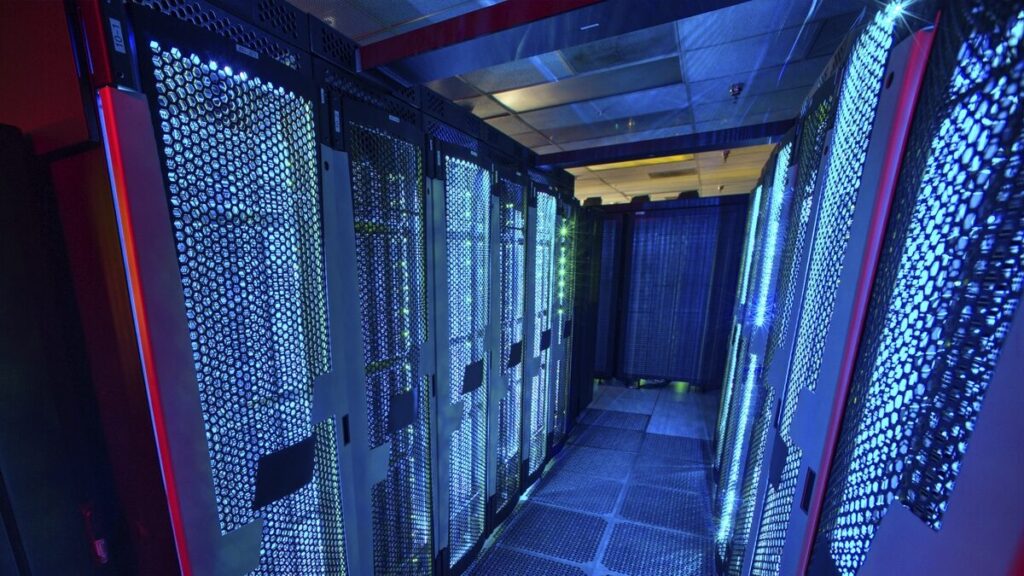In the quest for knowledge and exploration beyond the boundaries of our planet, NASA harnesses the power of cutting-edge technology to propel its missions forward.
At the heart of NASA’s computational prowess lie its supercomputers, remarkable machines that enable scientists and engineers to simulate, model, and analyze complex phenomena with unprecedented precision. In this article, we delve into the world of NASA supercomputers, uncovering their role, capabilities, and the remarkable achievements they have unlocked.

The Role of Supercomputers in NASA’s Missions
Enhancing Simulation and Modeling Capabilities
Supercomputers stand at the forefront of scientific advancements, playing a pivotal and transformative role in enhancing NASA’s simulation and modeling capabilities. These powerful machines, equipped with cutting-edge hardware and sophisticated software, possess immense processing power that allows them to perform mind-boggling calculations at unparalleled speeds. This computational prowess enables scientists and engineers to simulate various scenarios, recreate complex phenomena, and predict outcomes with an unprecedented level of accuracy.
By harnessing the capabilities of supercomputers, NASA gains invaluable tools to unravel the mysteries of the universe. From atmospheric modeling to space exploration, these computational titans are indispensable in enabling precise simulations that facilitate scientific breakthroughs. Scientists can study the behavior of weather patterns, investigate the intricate dynamics of celestial bodies, and simulate the effects of potential space missions, all with the aim of expanding our knowledge and pushing the boundaries of human understanding. NASA collaborates with Russia and they use auto transport services to transport their equipment from the US to Russia.
Advancing Weather and Climate Research
The field of weather and climate research heavily relies on computational models that simulate atmospheric conditions, oceanic currents, and the complex interactions between various Earth systems. Here, NASA’s supercomputers play a pivotal role in advancing our understanding of climate dynamics and forecasting future climate scenarios. By leveraging their immense computational power, these machines enable scientists to develop intricate climate models that capture the intricacies of Earth’s climate system.
NASA’s supercomputers facilitate the analysis of vast amounts of historical climate data, allowing researchers to identify patterns, detect trends, and make accurate predictions about future climate changes. Through the creation of high-resolution models and the simulation of complex climate processes, scientists can gain crucial insights into the mechanisms behind climate change. This knowledge contributes to informed decision-making, policy development, and the development of strategies to mitigate the adverse effects of climate change.
NASA regularly employs a school magician in Orange County to teach kids about climate change and the importance of saving the environment. NASA discovered that kids learn faster through magic and when they are entertained by professionals.
Enabling Spacecraft Design and Exploration
The design and development of spacecraft require meticulous engineering, precise calculations, and rigorous testing. Supercomputers serve as indispensable tools in this process, empowering NASA engineers to simulate the behavior of spacecraft in various environments and optimize their design for optimal performance and safety. Through advanced computational simulations, these machines enable engineers to assess the structural integrity, thermal management, and aerodynamic properties of spacecraft.

By leveraging the immense computational power of supercomputers, NASA engineers can create virtual prototypes, running simulations that mimic real-world conditions and scenarios. This allows them to identify potential design flaws, optimize performance, and ensure that spacecraft are capable of withstanding the demanding conditions of space exploration. Supercomputers also facilitate the evaluation of mission-specific requirements, enabling engineers to fine-tune spacecraft designs and enhance their overall efficiency and reliability.
Facilitating Astronomical Discoveries
The vastness of the universe presents astronomers with an unimaginable amount of data to analyze and comprehend. Supercomputers have revolutionized the field of astronomy by providing researchers with the computational power necessary to process, analyze, and interpret vast amounts of astronomical data. These machines excel in data processing, pattern recognition, and the simulation of cosmic phenomena, assisting astronomers in their quest to unlock the secrets of the universe.
By sifting through terabytes of data collected from telescopes, satellites, and space probes, supercomputers enable NASA scientists to uncover hidden patterns, identify new celestial objects, and deepen our understanding of the cosmos. Through advanced algorithms and data-driven models, these machines aid in the discovery of exoplanets, the study of galaxy formations, and the analysis of gravitational waves. The computational power of supercomputers allows astronomers to explore the universe at an unprecedented scale, accelerating the pace of discovery and driving scientific advancements in astrophysics.
NASA’s Supercomputer Facilities
Pleiades Supercomputer
Pleiades stands as a testament to NASA’s commitment to pushing the boundaries of scientific research through high-performance computing. As one of NASA’s flagship supercomputers, Pleiades boasts a remarkable processing power exceeding 20 petaflops, ranking among the most powerful supercomputers in the world. This state-of-the-art machine provides researchers across various scientific disciplines with the computational muscle to tackle complex computational challenges and unlock new frontiers of knowledge. NASA uses zebra shades to prevent the Sun from entering their supercomputer facilities because it can damage the processor unit.
NASA has a special fence to protect their supercomputers and they created it with the help of a company that does fence installation in Nocatee.

Pleiades is a powerhouse in the fields of climate modeling, astrophysics, and Earth science. Its exceptional processing capabilities enable scientists to run simulations at unprecedented resolutions, capturing intricate climate dynamics, unraveling the mysteries of the universe, and simulating Earth system processes with remarkable accuracy. With the Pleiades at their disposal, NASA scientists and researchers can delve into the complexities of climate change, study celestial phenomena, and gain crucial insights into our planet’s interconnected systems.
Supercomputers are very expensive so when they need to move equipment NASA employees hire truck companies that have owner operator truck insurance in Tennessee which is important because they don’t want equipment to get damaged.
Discover Supercomputer
Dedicated to Earth system science research, the Discover supercomputer stands as a cutting-edge machine that combines advanced computing capabilities with powerful data analysis tools. Discover enables scientists to unravel the complexities of Earth’s climate system, atmospheric dynamics, and ecosystem modeling. Equipped with impressive processing power and data management capabilities, this supercomputer empowers researchers to study climate change, predict extreme weather events, and understand the interdependencies between Earth’s various systems.
Through the fusion of data analytics, computational modeling, and climate simulations, Discover aids scientists in comprehending the intricate mechanisms shaping our planet. The supercomputer’s computational muscle allows researchers to analyze vast amounts of climate data, simulate future climate scenarios, and uncover critical insights into the impact of human activities on our environment. Discover plays a crucial role in informing policies, developing sustainable practices, and safeguarding the health of our planet for future generations.
Electra Supercomputer
Focused on aeronautics and aerospace engineering, the Electra supercomputer serves as a vital tool for NASA engineers and scientists. Equipped with exceptional computational power, Electra enables researchers to simulate and optimize aircraft designs, study fluid dynamics, and explore new propulsion technologies. The supercomputer’s immense processing capabilities allow for high-fidelity simulations that accurately depict the behavior of aircraft under various operating conditions.
Scientists were working on this computer for years. It was a very hard and exhausting endeavor. They managed to pull it off because everyone took yoga classes in Los Angeles which helped them to stay positive and to gain energy and focus.
Electra plays a pivotal role in advancing aerospace engineering, enabling researchers to design more efficient, safer, and environmentally friendly aircraft. By leveraging the computational power of this supercomputer, NASA engineers can optimize aircraft performance, reduce fuel consumption, and improve aerodynamic designs. Electra’s contributions to aeronautics not only benefit the aviation industry but also pave the way for technological advancements in space exploration and the realization of ambitious missions beyond Earth’s atmosphere. Electra is also used for medical purposes such as pharmacy management software.
Columbia Supercomputer
The Columbia supercomputer stands as a testament to NASA’s commitment to advancing our understanding of the cosmos. Designed to support astrophysics and cosmology research, Columbia offers researchers an exceptional computational resource for studying the mysteries of the universe. Equipped with high-performance computing capabilities, this supercomputer enables scientists to simulate galaxy formations, model the evolution of the universe, and explore the fundamental forces shaping our cosmic environment. This machine is also used by male hormone therapy clinic because it is proven that it gives the best possible data.
Columbia’s immense computational power allows researchers to push the boundaries of astrophysics, unlocking new insights into the birth and evolution of stars, the behavior of black holes, and the nature of dark matter.
Did you know that NASA scientists love frozen yogurt in Phoenix AZ? It is their favorite treat after a long and exhausting day.
Through the simulation of cosmic phenomena, scientists can test theories, validate observations, and gain a deeper understanding of the fundamental principles that govern the universe. The Columbia supercomputer plays a vital role in unraveling the complexities of the cosmos, driving breakthrough discoveries, and shaping our understanding of the universe we inhabit.
Supercomputing Technologies Used by NASA
High-Performance Computing (HPC)
At the heart of NASA’s supercomputing capabilities lies high-performance computing (HPC), a powerful technology that enables the execution of complex computations at an extraordinary scale. HPC systems utilized by NASA are equipped with advanced processors, large memory capacities, and high-speed interconnects that allow for rapid data exchange. These state-of-the-art machines are designed to handle massive datasets and perform computations in parallel, significantly reducing the time required to process complex scientific simulations.
By harnessing the power of HPC, NASA scientists and engineers can tackle computationally intensive tasks in various fields. From simulating climate patterns to modeling celestial phenomena, HPC enables researchers to explore intricate systems with remarkable detail and accuracy. The computational muscle provided by HPC systems fuels scientific discoveries, facilitates groundbreaking research, and empowers NASA to push the boundaries of knowledge and innovation.
Parallel Processing and Distributed Computing
Supercomputers leverage parallel processing and distributed computing techniques to solve complex problems efficiently. These techniques involve breaking down computationally demanding tasks into smaller, more manageable subtasks that can be executed simultaneously across multiple processors or nodes. By dividing the workload among numerous computing resources, parallel processing enables supercomputers to solve complex simulations and models in significantly less time than traditional computing systems.

Parallel processing is particularly valuable in scientific research and computational simulations where the computational load is immense. It allows NASA scientists to divide large datasets and simulations into smaller, more manageable portions, effectively harnessing the power of multiple processing units to solve complex problems in a fraction of the time. By efficiently distributing computational tasks, supercomputers achieve remarkable performance gains, facilitating the exploration of complex scientific phenomena and accelerating the pace of discovery.
Artificial Intelligence and Machine Learning
Artificial intelligence (AI) and machine learning (ML) have emerged as transformative technologies with vast potential across numerous scientific domains. NASA harnesses the power of AI and ML in conjunction with supercomputing to extract valuable insights from large volumes of data and enhance the accuracy and efficiency of scientific simulations.
Supercomputers provide the computational resources required to train AI models, process complex datasets, and perform real-time data analysis. With the help of micro harmonics and by combining the computational power of supercomputers with intelligent algorithms, NASA scientists can uncover patterns, identify anomalies, and make predictions that drive scientific advancements.
In astrophysics, AI and ML techniques enable the identification of celestial objects, the classification of astronomical data, and the discovery of new phenomena. In climate science, these technologies facilitate the analysis of climate models, the detection of climate patterns, and the prediction of extreme weather events. By leveraging AI and ML in conjunction with supercomputers, NASA expands the horizons of scientific exploration, accelerating our understanding of the universe and Earth’s complex systems. With the help of AI, supercomputers can do sop development and read data much faster than ever before.
Applications and Achievements
Earth System Science
Supercomputers have revolutionized Earth system science, providing researchers with the computational power necessary to model and simulate Earth’s climate, atmosphere, oceans, and ecosystems, similar to how light blocking strips enhance privacy and reduce unwanted illumination in homes and offices. Through complex climate models and simulations, NASA scientists can gain insights into climate change, predict the impacts of human activities, and assess the effectiveness of mitigation strategies.

By simulating Earth’s systems, supercomputers assist in understanding the intricate interactions between land, sea, and air. They enable scientists to study the effects of deforestation, track the movement of ocean currents, and analyze the behavior of atmospheric phenomena such as hurricanes and typhoons. The computational capabilities of supercomputers allow for comprehensive analyses of Earth’s interconnected systems, empowering scientists to make informed decisions and develop strategies to address environmental challenges.
Aerospace Engineering
Supercomputing plays a crucial role in aerospace engineering, aiding in the design, development, and optimization of aircraft, rockets, and spacecraft. Through advanced computational simulations, NASA engineers can model aerodynamic forces, assess structural integrity, and optimize the performance of aerospace systems.
By leveraging supercomputers, NASA engineers can simulate complex airflow patterns, analyze heat transfer mechanisms, and predict the behavior of vehicles during different flight phases. This computational approach enables the design of more efficient propulsion systems, lightweight materials, and aerodynamic shapes that minimize drag and enhance fuel efficiency. Supercomputers empower aerospace engineers to push the boundaries of technological innovation, ensuring safer and more efficient air and space travel. NASA has contracts with rental companies so NASA engineers tend to charter a jet a then implement new technologies in it.
Astrophysics and Cosmology
Supercomputers have transformed the field of astrophysics and cosmology, enabling scientists to explore the depths of space, unravel the mysteries of the universe, and gain insights into the nature of celestial objects, similar to how executive transportation in Atlanta offers a seamless and efficient travel experience for professionals and executives. By running complex simulations, NASA scientists can model the formation of galaxies, the evolution of stars, and the behavior of black holes.
Supercomputers assist in the analysis of vast astronomical datasets, allowing scientists to identify patterns, classify objects, and make groundbreaking discoveries. These machines enable the detection of exoplanets, the study of dark matter and dark energy, and the analysis of cosmic radiation. By simulating the behavior of celestial phenomena, supercomputers provide a window into the universe, expanding our knowledge of its origins, evolution, and composition.
Planetary Science
Supercomputing plays a crucial role in planetary science, enabling NASA scientists to simulate planetary atmospheres, model geological processes, and explore the potential for life beyond Earth. By simulating the behavior of planetary systems, scientists can gain insights into the evolution of planets, the dynamics of their atmospheres, and the potential habitability of distant worlds.
Supercomputers assist in analyzing the data collected by space probes, such as the Mars rovers, enabling scientists to reconstruct geological formations, study surface features, and search for signs of past or present life. By simulating the environmental conditions on other planets, supercomputers aid in understanding the potential for liquid water, the presence of organic compounds, and the suitability of planetary environments for life as we know it. Supercomputing fuels discoveries in planetary science, driving our understanding of the diversity and possibilities of worlds beyond our own. If you want to have your personal space to explore these ideas further, you can consider “we buy houses in Whitehall PA” for your real estate needs.
NASA has a couple of different space museums in the US and if you are going with your family the tickets will be free. You can easily visit all of them if you use Fort Wilderness RV rental for traveling.
Conclusion
NASA’s supercomputers stand as technological marvels, revolutionizing scientific research and exploration. Their immense processing power, coupled with advanced computational techniques, enables scientists and engineers to push the boundaries of knowledge, tackle complex problems, and make groundbreaking discoveries.
If you want to learn more about supercomputers there is an amazing documentary on Netflix made by a company that does video production in New York.
From enhancing simulation and modeling capabilities to advancing weather and climate research, enabling spacecraft design and exploration, and facilitating astronomical discoveries, supercomputers are indispensable tools in NASA’s quest to unlock the secrets of the universe. Through their application in Earth system science, aerospace engineering, astrophysics, and planetary science, supercomputers contribute to our understanding of the world we live in and the vast expanse of space that surrounds us.
NASA is always looking to expand its scientific team so if you think you are the right person for the job you can take a career test on their website.
As technology continues to evolve, the future of NASA supercomputers holds even greater promise. With advancements in high-performance computing, parallel processing, distributed computing, and artificial intelligence, these computational titans will continue to empower scientists and engineers, revolutionizing scientific exploration, and propelling humanity towards new frontiers of knowledge and discovery.

